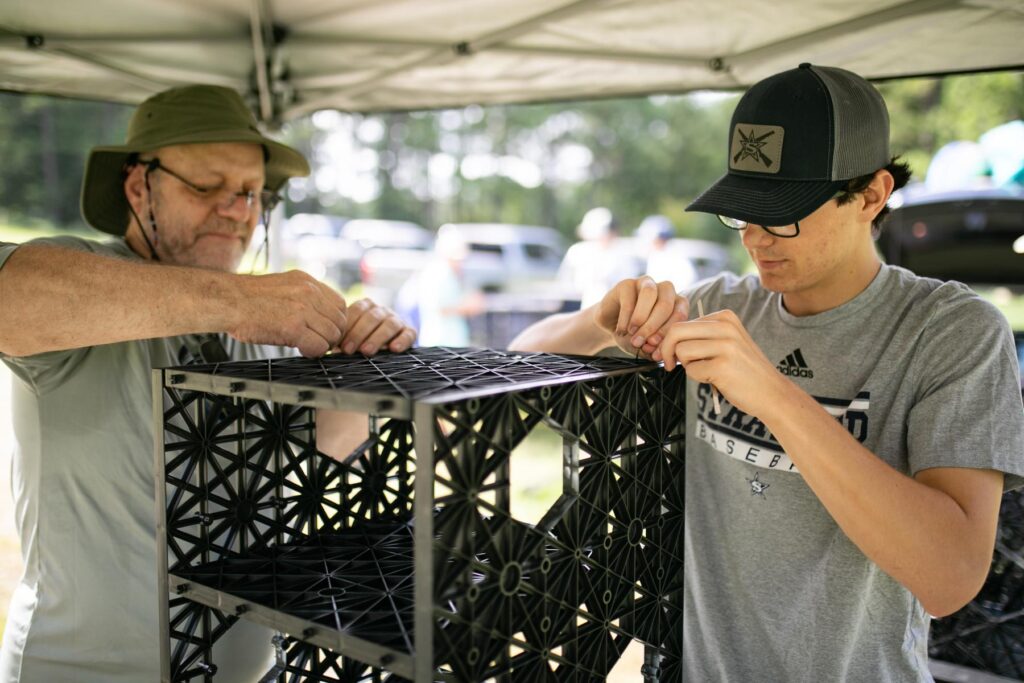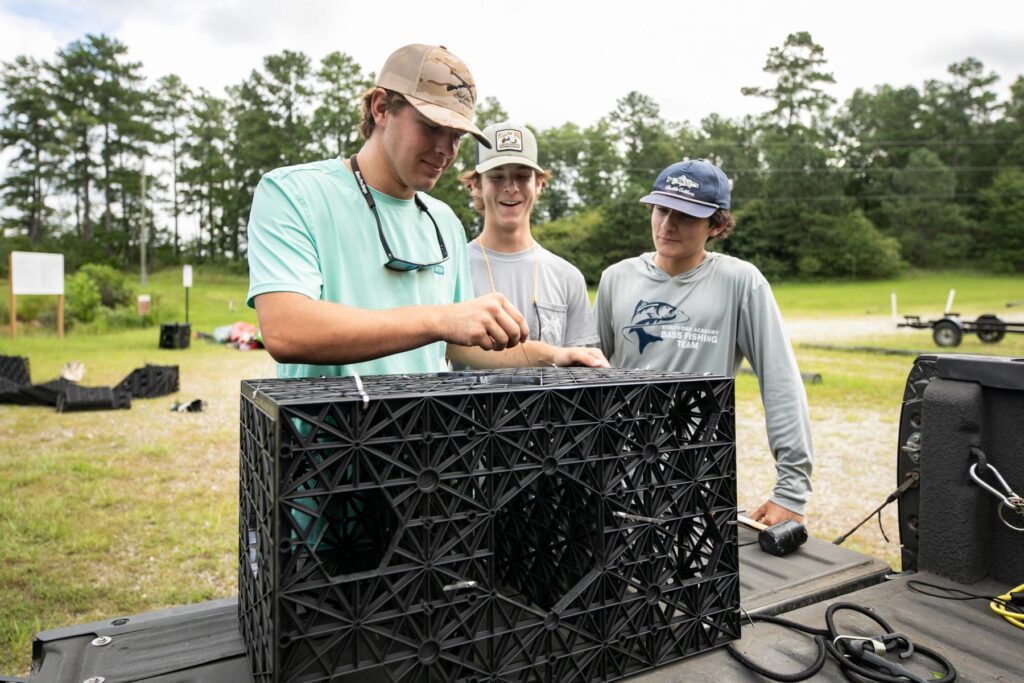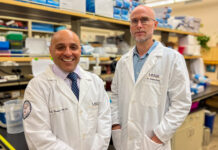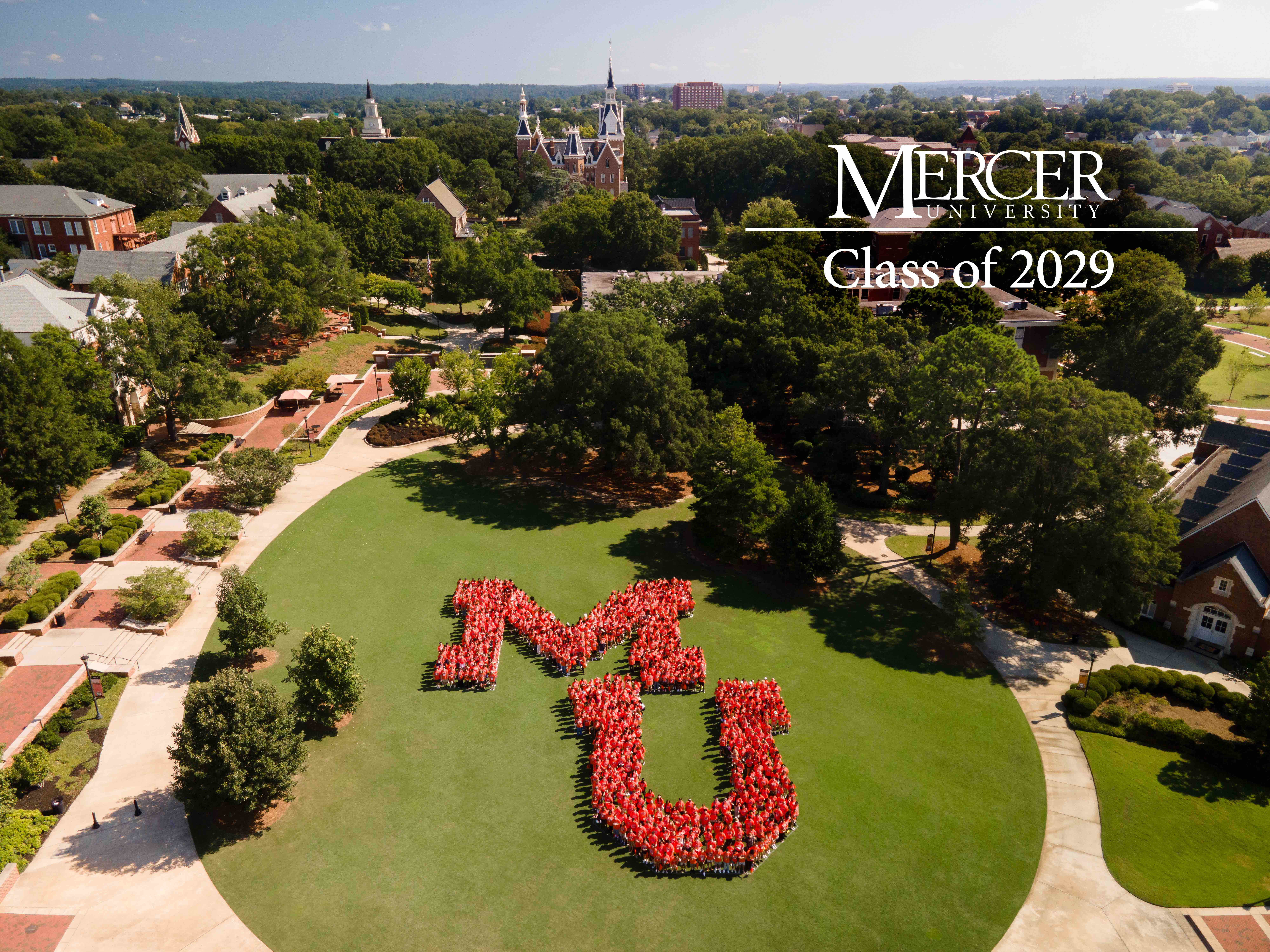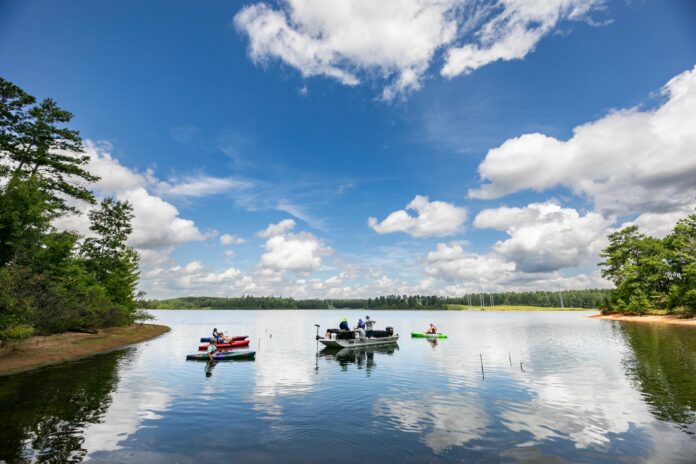
A Mercer University multidisciplinary project is working to improve the health of fish species in Macon’s Javors Lucas Lake. In mid-July, a team installed 11 aquatic habitats to help balance the fish populations there.
The 581-acre lake is the Macon Water Authority’s primary reservoir for drinking water, and it’s also open for recreational fishing. Largemouth bass, spotted bass and hybrid striped bass are among the aquatic inhabitants, the latter of which were introduced to the lake for sport fishing in more recent years and have altered the predator ecosystem.
“Some of the longtime recreational fishermen of Javors Lucas Lake said they felt like (fishing for) largemouth bass has gotten worse as the striped bass has gotten better,” said Dr. Craig Byron, biology professor and chair. “Macon Water Authority had several reasons to feel like the largemouth bass fishing was under pressure from the striped bass and the spotted bass.”
In collaboration with Macon Water Authority, Dr. Byron and students in his biostatistics and morphology course collected and analyzed fish data from the lake in 2023. From those numbers, they saw signs that largemouth bass were less robust than normal. The hybrid striped bass appeared to be beating the largemouth bass to its main food sources.
“The hybrid striped bass have anatomical and physiological indicators of superiority over the other predators in the lake,” Dr. Byron said. “We know that those striped bass are going everywhere, whereas largemouth bass and spotted bass are spending more time in shallower waters in the coves. Hybrid striped bass show up too because they are so opportunistic and so competitive in this ecosystem. They’re not supposed to be there, but they are.”
Under the direction of Professor and Chair of Environmental Engineering Dr. Philip McCreanor, Mercer student Carter Coursey has applied that data to his graduate research project. He holds a bachelor’s degree in biology and will complete his Master of Science in environmental systems in December.
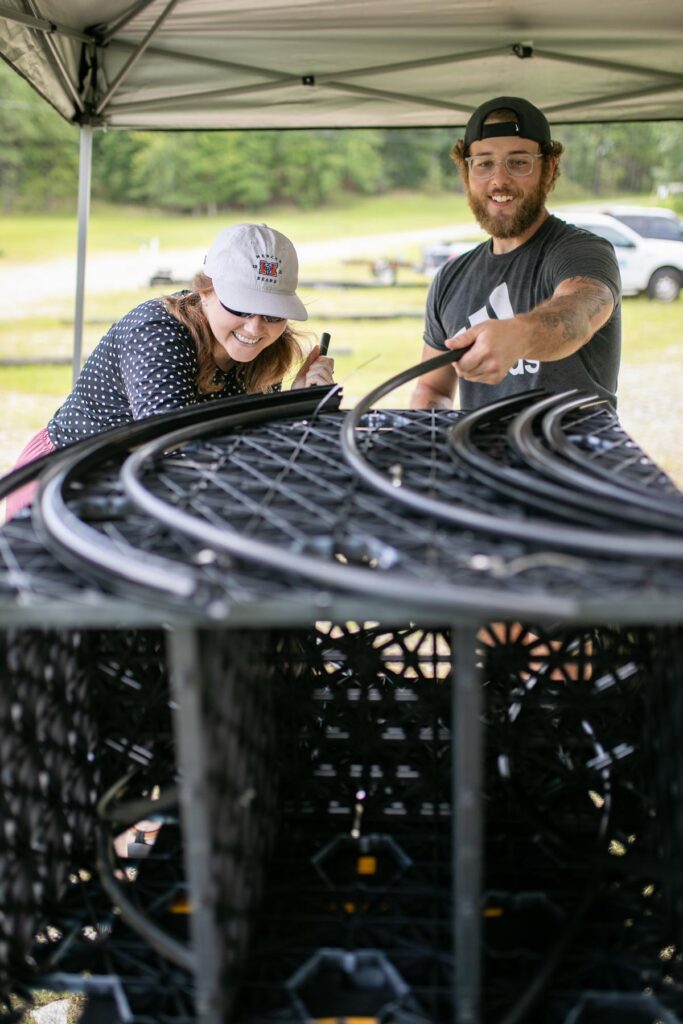
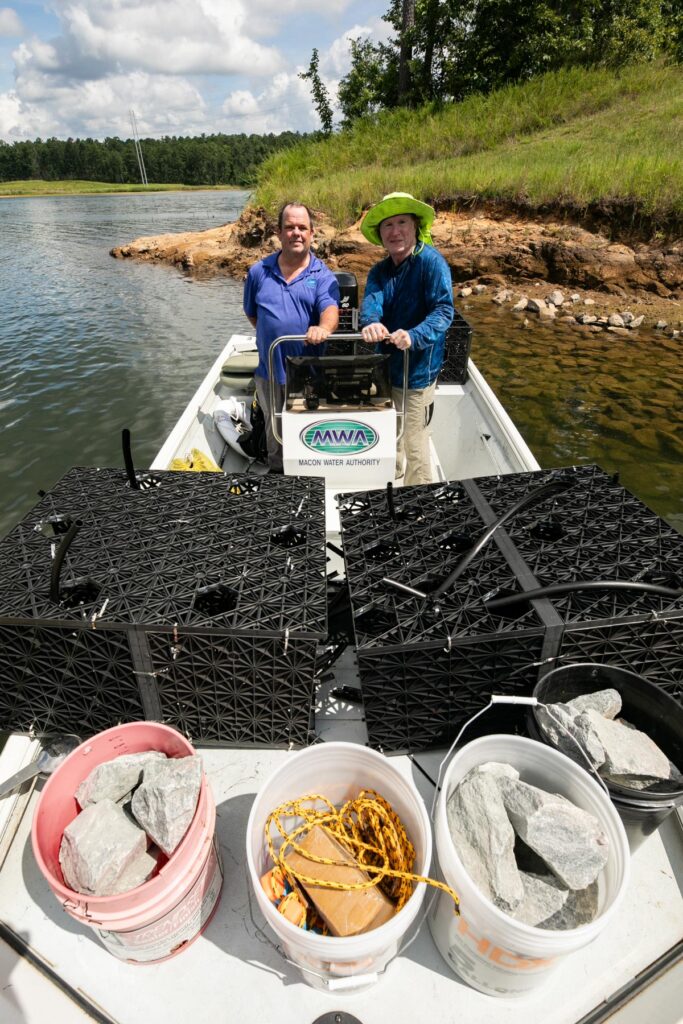
“I really wanted to do research with fish, but I couldn’t think of an idea where engineering and fish went together. Dr. McCreanor was able to put together the idea,” he said. “There are a lot of possibilities of what you can do with that project alone. That’s the main takeaway, that there’s a whole lot you can do with these two fields together.”
Coursey conducted literature reviews on artificial habitats, also known as fish attractors, in various environments to improve fish populations, Dr. McCreanor said. These man-made structures are modeled after natural habitats and provide an area where fish species can feed, breed and be protected from predators.
For Javors Lucas Lake, Coursey researched and designed two types of artificial habitats: one that would attract minnows or baitfish and one that would attract crayfish, which are the preferred foods for largemouth bass.
So the habitats will stand the test of time, Coursey identified building materials that are safe for the lake but also non-degradable. The habitat boxes contain elements that imitate rocks and sticks, small holes for crayfish or baitfish to enter, and larger holes for largemouth bass to enter. So, the habitats are constructed in a way that lets largemouth bass and their primary food sources in and keeps the predator striped bass out, Coursey explained.
“They would all presumably be attracted to the baitfish attractor, and it would give them something to gravitate toward, which allows them to stay a little bit hidden and avoid being eaten by something else,” Dr. Byron said.
Coursey did the preliminary assembly of the habitats. Then on July 16 and 18, a team joined him at the lake for the final construction and installation of five baitfish attractors and six crayfish attractors, Dr. McCreanor said. In addition to Mercer professors Dr. McCreanor, Dr. Byron and Assistant Professor of Environmental and Civil Engineering Dr. Adaline Buerck, Macon Water Authority staff and Stratford Academy teacher Michael Kelley and five of his high school students contributed.
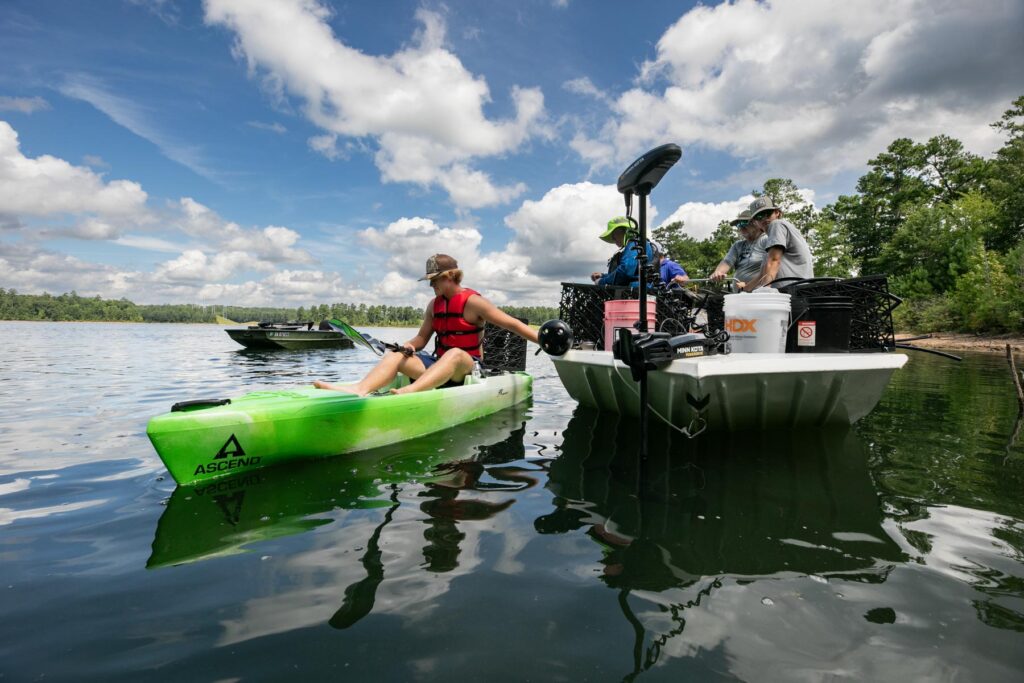
A number of the Stratford students are bass fishers and free-divers, which proved to be beneficial during the installation.
“The fun part was putting them in the water,” Coursey said. “Next semester, we will put in a lot more boxes if they get the grant.”
Dr. Buerck, who is also director of Mercer’s Cecil Day Family Center for International Groundwater Innovation, has applied for a grant from the PepsiCo Foundation that would allow for the installation of 70-90 more of these habitats throughout the lake.
“Then we can have ongoing studies to see how they’re doing and hopefully really bring the lake back to life. That would also engage more members of the community … and give a lot of volunteer opportunities,” she said. “It could be a great project for engagement with the community about where is their water coming from, how is it being treated, and what do they have to do to protect that water source.”
Dr. Byron is teaching his biostatistics and morphology course again this fall, and his students will collect and study data from the lake to see the influence of the new habitats.
“I think we’re going to find out the impact these have had and the efficacy of them through the work that Dr. Byron will do in his biostatistics class,” Dr. McCreanor said. “It could be a model for other places that have reservoirs where they want to help the fish population survive and thrive while not putting degradable materials in the lake.”
The goal is for these artificial habitats to be studied for many years into the future and involve many Mercerians and community members.
“I’m constantly excited to work at a university where they encourage the collaboration across the university and the engagement of students and the community in projects,” Dr. McCreanor said.
